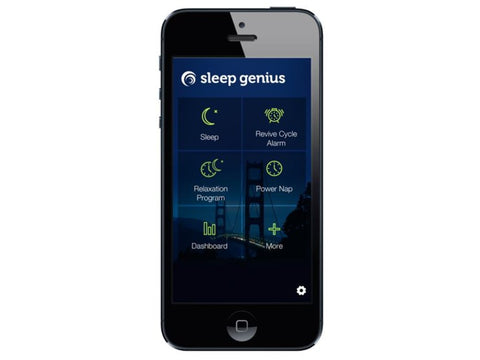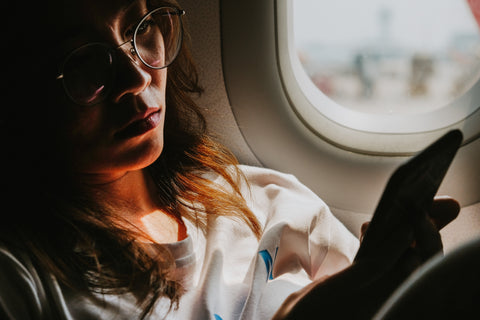It is commonly known that light affects the 24-hour cycle that tells our bodies when to sleep, rise, and eat (i.e. our circadian rhythm), but when it comes to the impact of different lighting on our physical health and mental wellbeing, that is more of a gray area (no pun intended). By understanding how we respond to various light frequencies (e.g., red, green and blue) and how they affect our productivity and hormonal balance, we can fine tune our environments for better health and productivity.
What Are Light Wavelengths?
Light is made of electromagnetic particles that travel in waves which are distributed over the electromagnetic spectrum. They vary in length and strength, and they emit energy.
Light with shorter wavelengths has higher energy. Each wavelength, measured in nanometers (nm) corresponds to a different light color and is grouped into a category from highest to lowest energy: gamma rays, x-rays, ultraviolet (UV) rays, visible light, infrared rays, and radio waves.
The human eye can only perceive light in the “visible light” category of the electromagnetic spectrum, which is broken down into the colors that our eye can detect, namely violet, indigo, blue, green, yellow, orange, and red. Each of these colors corresponds to a different wavelength and each has a different impact on our bodies, our health, and our energy levels.
How Visible Light Affects Our Physiology
Blue Light: Awake and Alert
Our bodies use blue light from the sun to regulate the circadian rhythm. Natural blue light is beneficial and necessary during the day by helping us regulate our natural sleep and wake cycles. It also helps us adjust to the circadian rhythm while traveling across time zones.
Natural blue light taken in during the day boosts our alertness, heightens reaction times, elevates our mood, and increases our feeling of wellbeing. Some people want to block out all blue light by wearing blue blocker glasses for computers, be aware that this is not desirable.
Green Light: Get Up and Go
Green light (with wavelengths from 520 to 560 nm) is one of the most effective colors in the visible light spectrum for inducing alertness and promoting wakefulness.
According to a study published by the Division of Sleep Medicine at the Harvard Medical School, it has stimulating properties similar to those of blue lights yet only demonstrates half the effects of shifting the circadian rhythm that blue light does.
Red Light: Stop and Sleep
Red light, at the far end of the spectrum, is the most commonly used wavelength for light therapy.
As opposed to green light, red light is a powerful sleep facilitator. This form of light (with wavelengths from 600 to 900 nm) prompts the body to produce melatonin, a hormone that induces sleep.
Why Blue Light Can Be Harmful
Excessive exposure to artificial blue light carries negative health effects. Blue light has short wavelengths (between 380nm and 500nm) and therefore, high energy. These "blue" or High Energy Visible (HEV) wavelengths flicker more than longer, weaker wavelengths. The flickering creates a glare that reduces visual contrast, affecting sharpness and clarity. It contributes to eyestrain, headaches, and physical and mental fatigue associated with looking at computer screens or other electronic devices for a prolonged duration.
Our eyes' natural filters do not have sufficient protection against blue light, whether it comes from the sun, electronic devices, or fluorescent-light tubes. This is why blue blocker computer glasses are so widely used.
Studies suggest that prolonged exposure to blue light from unnatural sources such as digital screens (TVs, computers, laptops, smartphones, and tablets) and fluorescent or LED lighting could cause serious and permanent damage to the eyes, such as retinal damage and age-related macular degeneration, which can ultimately lead to loss of vision.
Because of the widespread use of devices emitting high levels of artificial blue light, most people are exposed to more harmful blue light and for longer periods of time than ever before, leading to undesirable health effects and sleep issues.
Even low light – such as that from computers, TV, or night lights – is powerful enough to throw the body's clock off in the evening.
The Use of Unapproved Light Therapy Devices
“Over the past decade, there have been many non-FDA approved devices and technologies marketed for using blue light therapeutically. For example, blue light boxes for treatment of Seasonal Affective Disorder or circadian rhythm sleep disorders,” says Steven Lockley, Ph.D., a researcher in the Division of Sleep Medicine at Brigham and Women's Hospital.
“Our results suggest that we have to consider not only blue light when predicting the effects of light on our circadian rhythms, hormones, and alertness, but also other visible wavelengths such as green light. Just protecting yourself from the effects of blue light doesn't work because green light can also reset the clock," explains Lockley.
Light Color and Treatment of Disorders
Studies have been conducted to understand how lights of different colors can be used to treat medical disorders and improve wellbeing.
Blue and Green Light Enhances Alertness
In a nine-day study at the Intensive Physiological Monitoring unit at Brigham Women’s Hospital, 52 healthy volunteers were isolated from all cues including windows, clocks, internet, television, and anything else that could indicate the time of the day.
Researchers shifted the participants’ schedules so that they slept during the day and were awake in the night, during which they were exposed to 6.5 hours of either green or blue light to simulate an overnight work shift. The light exposure was timed to reset the internal circadian body clock later than normal, equivalent to the adaption required to prevent jet lag following a westward flight across time zones.
The effects of the light exposure on melatonin levels and the shift in the circadian clock were then measured in these subjects. Researchers found that while blue light is the most effective in stimulating non-visual responses, green light can also elicit them under certain circumstances.
In fact, green light was equally effective as blue light in stimulating non-visual responses at the start of a light exposure session or under dim light conditions. However, the effects vanished faster over time.
“Our findings suggest that by dynamically manipulating the color, duration, and pattern of light, currently available light therapies could be optimized and new therapies could be developed for the treatment of a number of disorders including circadian rhythm sleep disorders, seasonal affective disorder, and dementia. They could also be applied to the use of light as a drowsiness countermeasure, particularly during night shift work, or in situations where sleepiness might affect performance or present a safety concern,” Lockley said.
Red Light Promotes Sleep
Compared to those that experienced blue or white light, hamsters exposed to red light at night showed significantly fewer depressive symptoms and changes in the brain linked to depression. (However, total darkness at bedtime is still best for sleep).
The use of red light at night also has an added benefit: Infrared light, which is at the far end of the red light spectrum, has been shown to induce healing and promote mitochondrial (energy-producing cells) regeneration, resulting in improved energy with long-term use. The Ultimate Guide To Red Light Therapy is a great book for an in depth look at how to use red light therapy for anti-aging, fat loss, muscle gain, performance enhancement, brain optimization and more.
At-Home Light Therapy Made Accessible
By understanding the visual systems that govern the body’s clock, smarter lighting devices can be developed. For instance, Dr. Lockley's lab is working with NASA and the Navy to create lighting systems for the International Space Station and for submarines, where it’s crucial to keep workers performing at peak efficiency without access to natural light.
Using light to increase alertness, induce sleep, facilitate healing, or deliver other therapeutic benefits is no longer the domain of advanced research centers or military agencies. There are more and more at-home solutions accessible to us today.
For example, even if you’re feeling low on energy, you can simply use red light to recharge your batteries. You can purchase near infrared bulbs that emit light in the appropriate spectrum (700-900 nm) for home use.
Alternatively, if you have difficulty falling asleep at the beginning of the night (delayed sleep phase) or if you’re unable to fall back to sleep after waking early in the morning (advanced sleep phase), Sleep Savior™, the “next generation” blue blockers, can effectively help you rewire your brain for sleep by blocking both blue and green light.
Sources
https://www.darksky.org/light-pollution/human-health/
https://sleep.med.harvard.edu/people/faculty/163/Steven+W+Lockley+PhD
https://sleep.med.harvard.edu/news/356/Green+Light+Affects+Circadian+Rhythm




